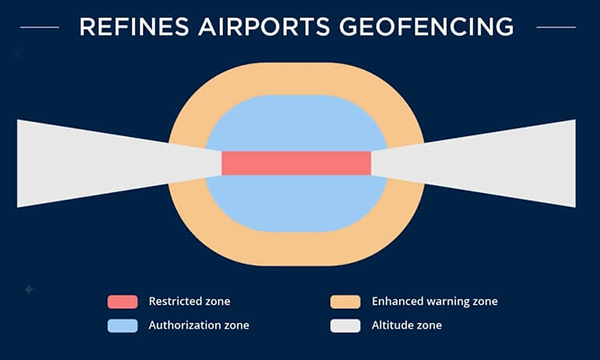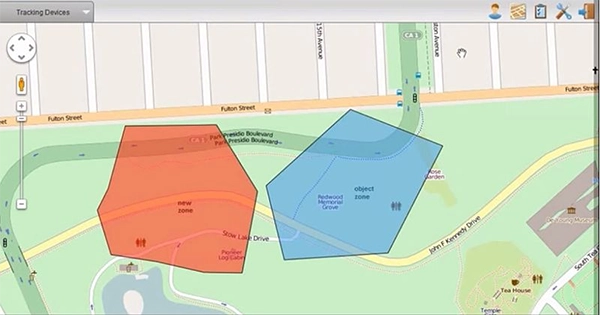With the rising trend of drone popularity, the technologies to control them are necessary to prevent their exploitation. Speaking of the Federal Aviation Administration (FAA) report, there are already 1.7 million registered drones in the USA, and the number is only going to rise in the future.
Such a rise in drone technology can bring various security or private threats to both individuals and the government. Hence, technologies like geofencing are always there to ensure that there is no privacy violation in restricted areas.
A study indicates that geofencing helps in eliminating around 60% of unauthorized drone incidents (which is a huge number).
If you want to know further about this tech, keep reading this article till the end as it uncovers some necessary details.
Understanding Geofencing
Geofencing is the concept whereby GPSs, or other location-tracking methods, create a virtual boundary around an area. With this virtual boundary, now called the “geofence,” devices inside the area can trigger certain preset responses or notifications when entering or leaving.
How Geofencing Works

It all starts with determining the location where a device cannot be entered. You can determine the area either by inputting GPS coordinates or by drawing an area on a map. Devices that have built-in GPS or other location-monitoring capabilities are then observed consistently.
When the device enters the boundaries, an action is performed, anything from just a notification, or an alert, to automated tasks.
Practical Applications
This is where it can be used in a lot of areas. It includes perimeter security, asset tracking in security, personal reminders, as well as parental controls. With up-to-date geofencing technologies, businesses and individuals alike can also leverage increased efficiencies for added security against threats and more personalization.
Ethical and Security Considerations of Geofencing
Geofencing technology is accompanied by various advantages but with serious concerns about privacy. In other words, It is like spying on the movement and activities of people, and all these activities are tracked, that too even without the consent of the user. These also include the collection and storage of data on one’s location, identifying the potential for misuse, and a breach of privacy.
A better way or solution can be informed consent and transparency because these concerns can be a way to conduct due diligence. Ultimately, it will make users aware of the practice of geofencing and attaining fully informed consent for collecting and using a user’s data. The transparency of geofencing practices of companies/organizations-that is, what information is collected, stored, and actually used-needs to be addressed.
DID YOU KNOW?
Drone racing has grown into a popular sport with international leagues, like the Drone Racing League (DRL), where pilots fly drones at speeds up to 90 mph.
Moreover, there is great threat of cyberattacks since such systems can easily be breached and data misused. Besides, the tech can be misused for the tracking of unauthorized people and building exclusion zones that may cause damage, both to body and property.
Counter-Drone Technologies and Geofencing

Geofencing technology, integrated with counter-drone systems, provides a strong guard against any sort of unauthorized activity carried out by drones. Geofencing systems may establish virtual boundaries around critical infrastructure and military bases that can identify and set off an alarm about the encroachment of a drone into a restricted area.
Once identified, a drone can have its position pinpointed with GPS data down to precisely where it is, therefore allowing an effective, targeted response. The counter-drone systems may be triggered and used to neutralize the drone. The potential counter-drone techniques may include jamming communications between the drone and flight controller, impacting the drone with high-energy lasers, capturing it with a net, or even with kinetic impact systems that physically knock a drone out of the sky.
Geofencing applied in the field of counter-drone technologies has enormous benefits in that it significantly raises security levels by proactively detecting and responding to potential threats posed by drones. It protects critical infrastructures and personnel, and precision targets the threat without causing collateral damage.
Besides that, it is also not so expensive compared to other means of security and is readily up-scaled in line with the varying needs of security.
Conclusion
A forceful defense that joins geofencing to counter-drone technologies against the growing menace of rogue flying drones, it is. This means creating virtual barriers around critical infrastructures and military bases using geofencing systems, where early detection and responses against any possible intrusion by a drone can be effective.
Once a drone has been detected, neutralization of the threat can then be provided by the counter-drone systems through methods such as jamming, laser systems, net systems, or kinetic impact systems.
Such a synergistic approach allows for maximum security, precise targeting, and effective economy of means with respect to protection against sensitive assets and personnel. Given that drone technology will keep evolving, military organizations must invest resources in state-of-the-art drone countermeasures, keep pace with new emerging threats, and further develop such solutions.




